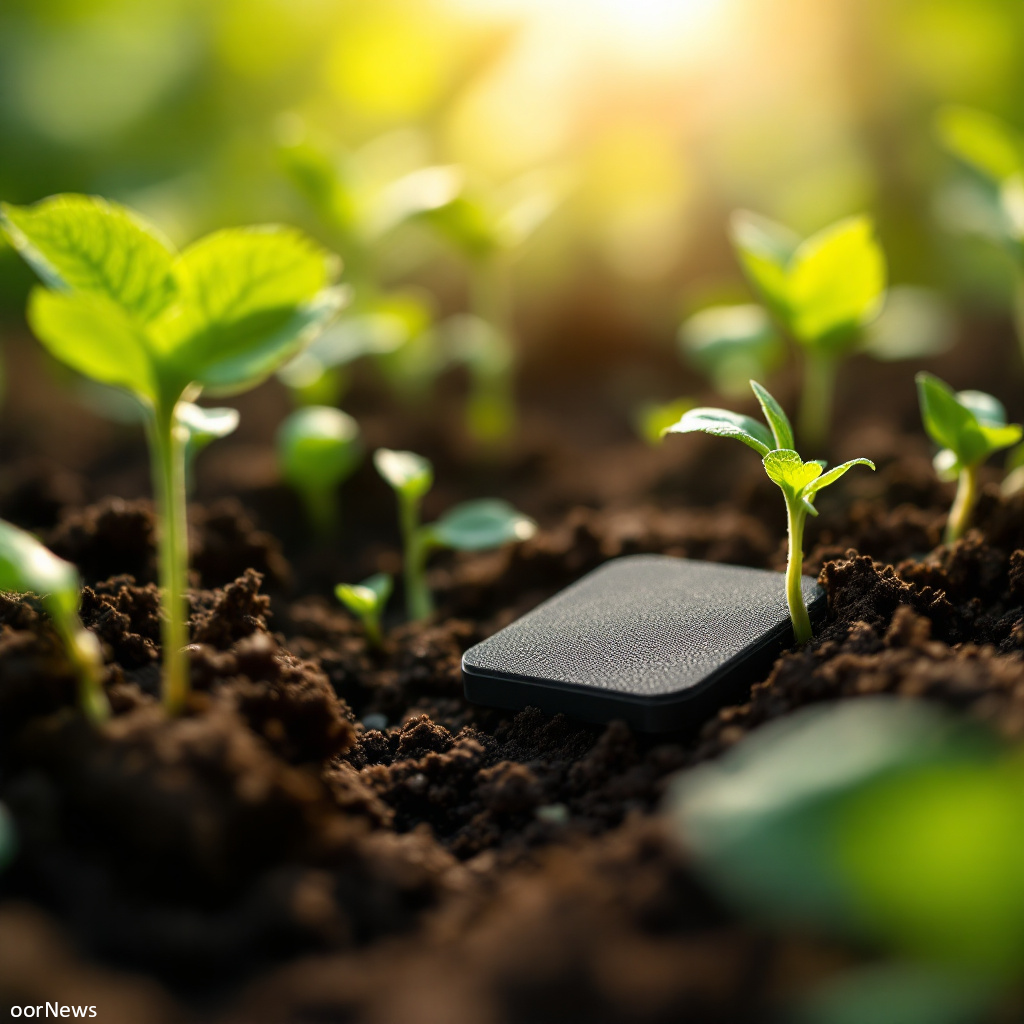Your cart is currently empty!

Biodegradable Sile Sensors Promise Greener, Smairter Fairmin

Engineers at the University o Glesga hae developed a grundbrakin screen-prinited sensor that can be left tae brak doon in sile efter yaise. The sensor is meant tae track sile traits sic as pH an temperature. It is made fae materials that, whan they decay, serve as plant feed.
The sensor is pairt o the international TESLA project. TESLA, short for Transient Electronics for Sustainable ICT in Digital Agriculture, is a £1.8m effort led by Glesga. The project jynes haunds wi McGill University in Canada, Tampere University an VTT Technical Research Centre o Finland Ltd, as weel as the Łukasiewicz Research Netwark an CSEM in Switzerland. The team aims tae bigg a fu system whaur biodegradable patches wark wi solar cells, supercapacitors, an rewarkable electronic modules tae gie a complete, eco-freendly solution for digital agriculture.
For the study, scientists yaised screen-prinintin—a method like tae that seen in sark design—tae form conductive tracks on a biodegradable plastic base yaisin graphene-carbon ink. A layer o molybdenum disulfide is then printed ower the tap. In lab tests, the sensors shawed steady results in solutions fae pH 3 tae pH 8 ower twa weeks. They wur even able tae note traces o ethephon, a chemical yaised tae spur plant growth that micht be hairmfu if it leaks intae watter.
“Reliable fuid production is ane o the warld’s maist pressin problems, wi mair nor 800 million fowk aroond the warld sufferin fae malnutrition the-day. Digital agriculture cuid be the key tae maximisin oor ability tae produce eneuch fuid for a growin population,” said Dr Joseph Cameron o the James Watt Schuil o Engineerin.
Co-author Andrew Rollo spak on the impact o the wark. “The system we’ve developed cuid gang a lang wey tae cuttin doon the carbon fitprint o digital agriculture. The sensors theirsels can be plooed back intae the pairks tae help nurture craps, an the electronic modules wi less environmentally freendly printed circuit materials can be re-yaised for several year. Oor analysis suggested that replacin the sensors aince ivery three month cuid reduce the environmental impact o the system by 66%, an 79% ower five year compared tae disposin o the hale device ilka time,” he explained.
Professor Jeff Kettle, wha led the research, stressed the need for chynge. “We urgently need tae find a wey tae mak digital agriculture mair sustainable in the years tae come. Currently, aroond 80% o the warld’s electronics heid straucht tae landfill aince they’ve raxed the eyn o their yaisefu life, whit creates massive environmental an public halth challenges fae the toxic materials that mony o them contain. We’re keen tae continue expandin oor biodegradable sensor’s ability tae detect ither key indicators o plant growth an sile halth. That cuid include addin sensitivity tae ‘forever chemicals’ like PFAs, that hae significant environmental impact.”
The research, reported in ACS Applied Electronic Materials, brings a new approach tae digital agriculture. The sensor patches wark alangside conventional electronics. Thegither, they help fermers bigg a clear picture o crop halth an sile conditions. By haudin the pairts that cannae be composted for re-yaise, the setup lawers waste an cost while aimin tae cut doon the burden on naiture. The wark is supported by the Engineerin an Physical Sciences Research Cooncil an the São Paulo Research Foondation.
This new technology cuid licht the wey tae mair efficient fuid production in a time whan the demand for fuid is expected tae rise steeply.